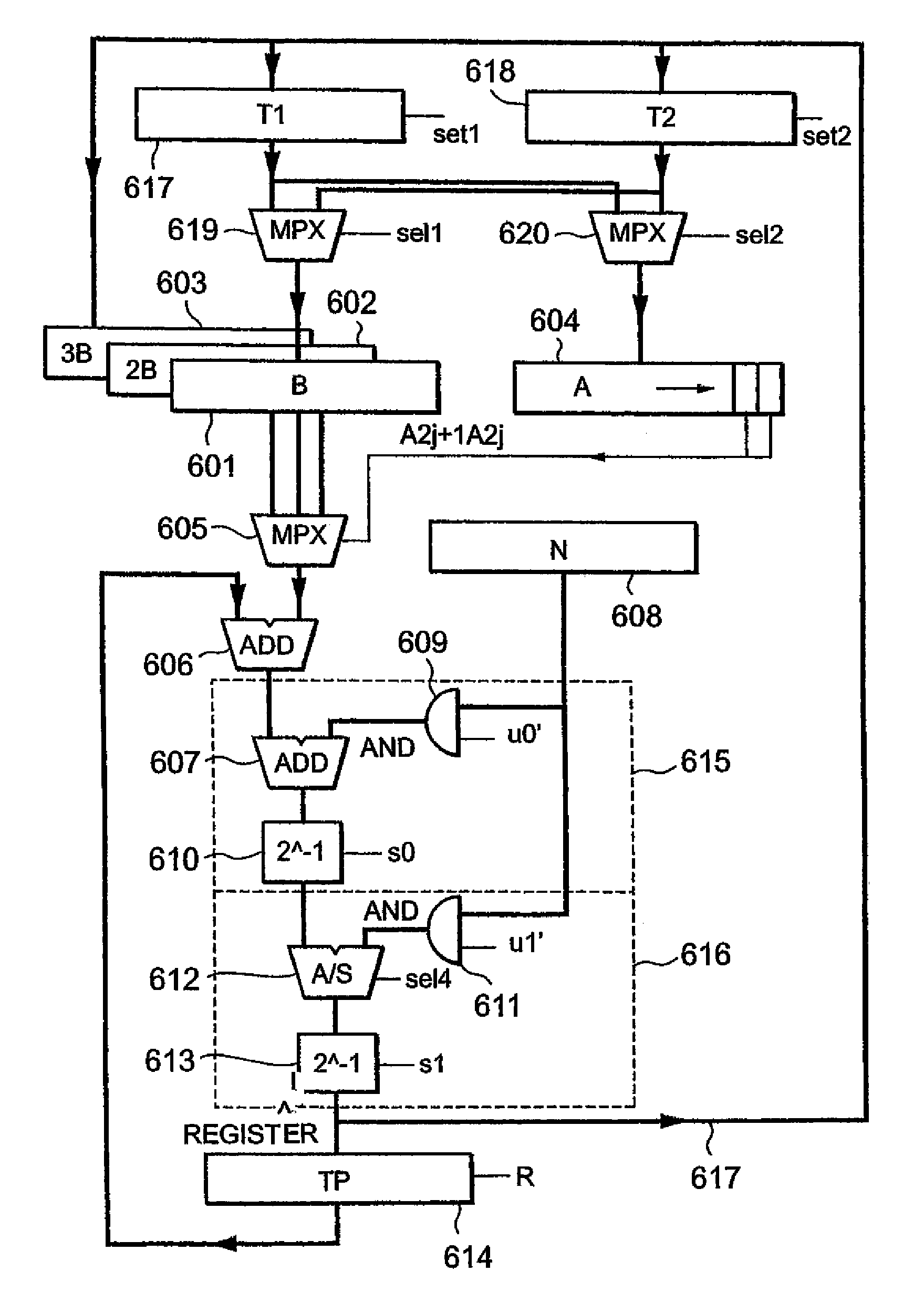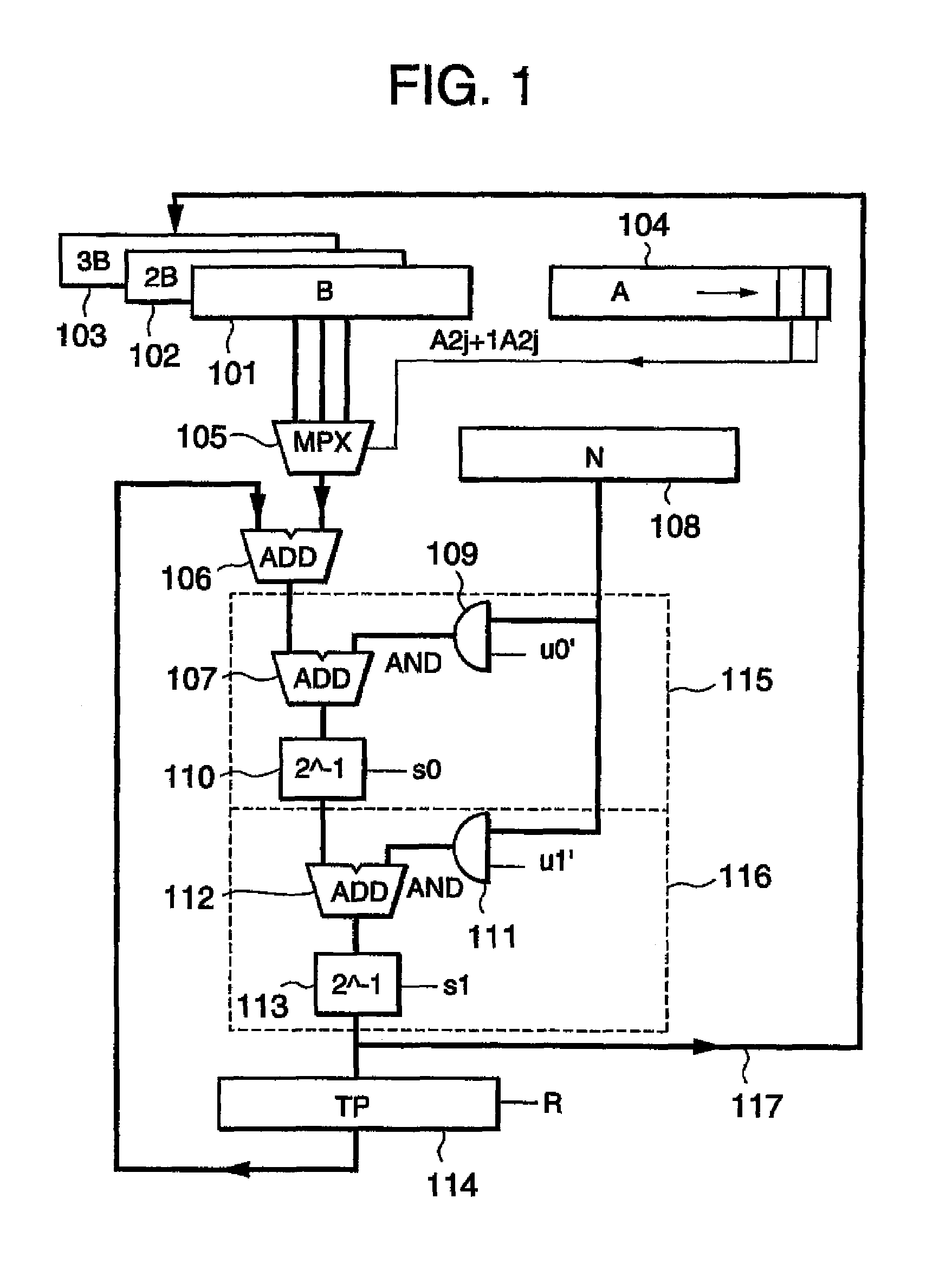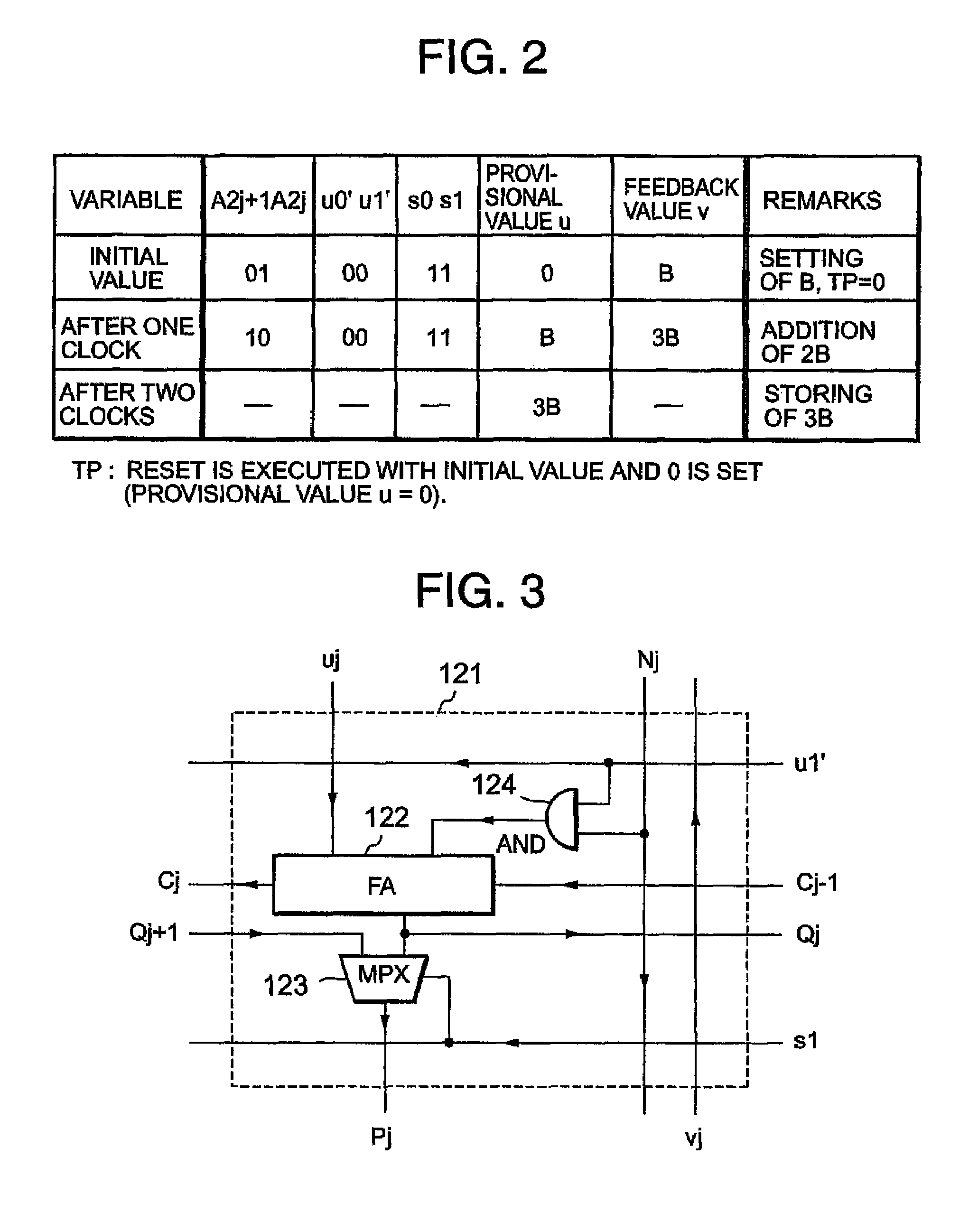Multiplication remainder calculator
- Summary
- Abstract
- Description
- Claims
- Application Information
AI Technical Summary
Benefits of technology
Problems solved by technology
Method used
Image
Examples
first embodiment
[0028]In a first embodiment according to the present invention, there is disclosed a method of simultaneously processing two bits in the multiplication remainder calculation based on the Montgomery method. When simultaneously processing two bits in the multiplication remainder calculation according to this embodiment, since a partial product may be larger than B in some cases, addition of the modulus N must be carried out in two stages, and processing to judge whether the modulus N is added is complicated.
[0029]Expression 4 is first reconfigured into a partial product for each two bits.
Mont(A·B)=2^−k*{Σ(2A2j+1+A2j)*B*2^2j (j=0, , , k / 2−1)}(modN) (Expression 6)
where k is assumed as an even number.
In Expression 6, the partial product is (2A2j+1+A2j)*B. In order to simultaneously process two bits in the multiplication remainder calculation based on the Montgomery method, the addition for each term must be advanced while always keeping the inferior two bits of the provisional value u t...
second embodiment
[0046]A second embodiment according to the present invention will now be described. The second embodiment according to the present invention concerns the calculation of the e-th power of the message M (C=M^e).
T1=R (A1)
T2=Mont(M,R^2) (A2)
for(j=0;j
if(ej==1)T1=Mont(T2,T1) (A4)
T2=Mont(T2,T2)} (A5)
C=Mont(T1,1) (A6)
[0047]As apparent from the above calculation, the Montgomery product Mont repeatedly uses its argument (T1 or T2). Thus, it is possible to consider the method which substantially improves the speed of the calculation by providing new registers (T1 and T2).
[0048]FIG. 4 is a circuit block diagram illustrating calculation of the e-th power of the message M of the second embodiment according to the present invention. The second embodiment basically has a structure that a T1 register 617, a T2 register 618, a multiplexer 619, and a multiplexer 620 are added to the FIG. 1 circuit which is the first embodiment according to the present invention. A latch signal set1 ...
third embodiment
[0063]In addition, the third embodiment according to the present invention can be also further generally extended. This is a method of calculating the Montgomery product of a number to be multiplied A and a multiplier number B (Expression 4), in a circuit which adds a partial product {Σ(Aj*B)*2^j (j=0, . . . , m−1)} to a provisional remainder u by using a value of inferior m bits (m is an integer not less than 2) of the number to be multiplied A and the multiplier factor B, by rendering the inferior m bits of the provisional remainder u into 0 by adding a multiple number {Σ(sj*N)*2^j (j=0, . . . , m−1)} of the modulus N, then executing right shift of the inferior m bits of the provisional remainder u, and repeating the above-described processing. In this method, a multiple number of the modulus N is also required as pre-processing, but shift based on a change in connection is used with respect to a 2^j-fold value, and any other value must be calculated in the pre-processing.
[0064]Ac...
PUM
 Login to view more
Login to view more Abstract
Description
Claims
Application Information
 Login to view more
Login to view more - R&D Engineer
- R&D Manager
- IP Professional
- Industry Leading Data Capabilities
- Powerful AI technology
- Patent DNA Extraction
Browse by: Latest US Patents, China's latest patents, Technical Efficacy Thesaurus, Application Domain, Technology Topic.
© 2024 PatSnap. All rights reserved.Legal|Privacy policy|Modern Slavery Act Transparency Statement|Sitemap



